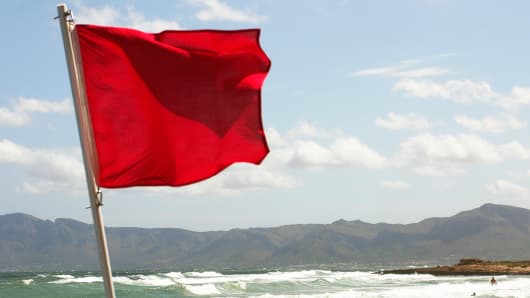Now, this may not apply to the U.S. economy, which is growing increasingly self-sufficient, and, as a major consumer of commodities, is also a beneficiary of the stunning drop in prices.
However, interest rates have collapsed around the globe, yield curves are flattening from New Zealand to New York, a reliable historical indicator of slowing growth, six to nine months down the road.
Today, Wall Street is shrugging off these worrisome factors and, instead, cheering a positive start to earnings season, as Alcoa, the first major company to report its 4th quarter results, beat expectations, delivering both better-than-expected profits and revenues.
Watch Cramer's Mad Dash: Alcoa raises the bar
But digging into the interest-rate weeds a little further, I would be more focused on what's happening to global rates than to Alcoa.
Before the stock market rallied, the 10-year Treasury yield fell to 1.86 percent.
Yields on 10-year bonds in Germany are now below half a percent and at a quarter percent in Japan! Japan's five-year note now yields zero, while a 10-year note in Switzerland (which has negative short-term rates) offers a paltry 0.18-percent return!
Copper, an economically sensitive commodity because it's used everywhere from homes to autos and computers, is tumbling in price.
Read MoreInvestors go long gold, short copper in oil freefall
Copper was artificially inflated several years ago as China bought up the world's supply amid a massive, yet uneconomic, infrastructure build out over the last five years. It may have also been manipulated by some big investment firms which held copper off the market in warehouses in an effort to drive up the price (we used to call that "cornering the market"). It has since fallen sharply in price.
It is said that the economy is "topped with a copper roof," in so far as when copper drops sharply, the economy can't be far behind.
In 2011, copper peaked at about $4.25 cents a pound. It now trades at $2.65, a 34-percent decline from the high.
In the past, when the U.S. suffered a recession, copper bottomed at around 70 cents a pound. The highs and lows for copper may have been adjusted upward in more recent times, but the decline is, none-the-less, worrisome.
Lumber, despite revived hopes for a real-estate rebound, is also getting hammered. Lumber is down 17 percent from its most recent high.
Read MoreJanus' Bill Gross: The good times are over
When taken together, the crash in crude (which admittedly is largely supply-driven), the collapse of other commodities and the stunning retreat in rates, IS a reliable historical warning sign that there is something wrong somewhere.
Clearly the U.S. is much better suited to withstand a global slowdown. However, much of the rest of the world is already on the precipice of both recession and deflation.
It pays to heed the message of the markets. One can only hope that someone out there is not simply cheering a stock-market rally but instead actively fretting -- if not acting on -- this frightful set of developments in non-equity markets.



